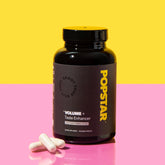“Busting a nut” is a slang term commonly associated with male orgasm, ejaculation, and sexual release. Despite its informal tone, it refers to a very natural physiological process experienced by those with male reproductive anatomy. Whether it happens during intimacy with a partner or through masturbation, busting a nut can be both physically pleasurable and potentially beneficial for one’s overall well-being. In this comprehensive article, we will delve into the biology behind ejaculation, common questions related to this process, and how it can impact male health – all while providing factual, conversation-friendly insights.
Table of Contents
- What Does “Busting a Nut” Really Mean?
- The Physiology of Ejaculation
- Potential Benefits & Considerations
- Common Myths & Misconceptions
- Frequently Asked Questions
- Conclusion & Final Thoughts
- References
What Does “Busting a Nut” Really Mean?
“Busting a nut” is a colloquial expression used to describe the act of male orgasm and ejaculation. It typically refers to the moment of climax characterized by a series of contractions in the pelvic floor accompanied by the release of semen. This phrase has permeated popular culture but is ultimately tied to essential aspects of reproductive health and pleasure.
Though the term “busting a nut” might give the process a casual or comedic tone, it underscores a significant part of men’s sexual health. The process of ejaculation evolves through several stages: sexual arousal, plateau, climax, and resolution. Understanding these stages and the physiology behind male orgasm can positively influence sexual wellness, relationship satisfaction, and even broader physical health. Ejaculation involves the coordination of nerves, blood vessels, hormones, and muscles working in harmony. From the prostate and seminal vesicles to the urethra and penis, numerous components play vital roles in the journey to a fulfilling climax.
The term can arise in conversations surrounding masturbation, foreplay, or intercourse. Although some may view it as taboo, discussing it openly can dispel myths around male sexual function and help foster healthier attitudes toward sexuality. Through the sections below, we’ll explore various facets of this topic, from the physiological processes involved to addressing the questions people most commonly ask.
The Physiology of Ejaculation
To appreciate what “busting a nut” entails, it is helpful to examine the underlying physiology. The male reproductive system is quite intricate, integrating a symphony of hormonal signals, nerve impulses, and muscle contractions. In general, ejaculation and orgasm involve three main phases:
- Emission: This stage begins when sexual arousal reaches its peak and signals are sent from the spinal cord to the reproductive organs. The prostate gland, seminal vesicles, and vas deferens all push fluid toward the urethra. These fluids, which include sperm and seminal fluid, combine to form semen.
- Ejaculation: As stimulation continues, muscle contractions in the pelvic region expel semen through the urethra and out of the penis. The rhythmic nature of these contractions contributes to the sensation of pleasure.
- Orgasm: Although ejaculation and orgasm often occur simultaneously, they are technically separate functions. Orgasm is the intense wave of pleasure and release, governed by complex neurological and endocrine processes. Neurotransmitters like dopamine and oxytocin surge through the brain, enhancing the sensation of pleasure and bonding.
During arousal, blood flow increases within the penis, achieved through vasodilation and relaxation of smooth muscle tissue. This physiological response is often modulated by nitric oxide, which helps maintain erection quality. Once sexual stimulation ceases and the body enters the resolution phase, blood flow normalizes, and the penis returns to a flaccid state.
Within the broader context of men’s health, the endocrine system (particularly testosterone) plays a substantial role in sexual function. Testosterone influences libido, sperm production, and the growth of sexual tissues. A healthy hormonal balance can optimize sexual performance and satisfaction, highlighting the importance of addressing potential hormonal imbalances or deficiencies with medical guidance, if necessary.
Understanding the biology behind ejaculation can help dispel some of the stigma associated with casual terminology like “busting a nut.” Knowledge of the factors that control erection, orgasm, and ejaculate volume can foster greater control over one’s sexual experience, potentially aiding in matters such as timing, intensity, and even managing specific sexual dysfunctions (e.g., premature ejaculation).
In the following sections, we will look at various health benefits and concerns related to ejaculation, shedding light on how this pivotal process affects the body—both physically and psychologically.
Potential Benefits & Considerations
While often perceived primarily as a source of pleasure, ejaculation can also be interwoven with certain health advantages. Research and anecdotal evidence suggest that “busting a nut” might yield positive outcomes across psychological, emotional, and physiological domains. However, variations in individual health and lifestyle factors influence any benefits.
-
Stress Reduction
- Ejaculation is known to prompt the release of neurotransmitters like serotonin, dopamine, and oxytocin. These hormones enhance positive mood and relaxation, often leading to stress relief.
- The pleasure from orgasm can serve as a natural counterpart to stress-producing hormones like cortisol.
-
Better Sleep Quality
- Many report improved sleep after orgasm, likely due to the relaxing effect of endorphins.
- As the body transitions from high arousal to rest, it promotes a sleep-friendly shift in heart rate and blood pressure.
-
Potential Prostate Health Benefits
- Some studies suggest that regular ejaculation might help flush potentially harmful substances from the prostate gland, possibly reducing the risk of certain prostate issues.
- Ejaculation can be seen as an exercise of the pelvic floor muscles, potentially aiding in maintaining muscle tone in the region.
-
Relationship Building & Intimacy
- In partnered sexual experiences, orgasm can foster emotional closeness and increase bonding via hormone release like oxytocin.
- Open communication about sexual needs and satisfaction can develop a deeper relationship, boosting mutual trust and intimacy.
Despite these potential benefits, it is vital to acknowledge that sexual health varies widely among individuals. Certain medical conditions or psychological factors may impact how and whether one experiences these benefits. When challenges like erectile dysfunction, low libido, or difficulty achieving ejaculation arise, consultation with a healthcare professional can provide tailored solutions.
Additionally, societal attitudes toward male orgasm can produce unrealistic expectations. Achieving a particular frequency of ejaculation does not necessarily equate to superior health. Each man’s biological rhythms and preferences differ. Striking a balance between sexual satisfaction and overall physical and emotional well-being is the ultimate goal.
Common Myths & Misconceptions
The term “busting a nut” can occasionally fuel misconceptions about male sexual performance and identity. Below are some widespread myths and the facts that counter them.
-
Myth 1: Ejaculation Always Improves Mood
While orgasm often releases hormones linked to happiness, psychological or emotional factors can dampen or negate any positive effect. Men struggling with depression or anxiety might not always find relief solely through ejaculation. -
Myth 2: Ejaculating More Means Higher Fertility
Though regular ejaculation might ensure healthy sperm turnover, there is a point of diminishing returns. Ejaculating too frequently within a short timeframe can temporarily lower sperm count. Moderation is key. -
Myth 3: “Blue Balls” Can Be Dangerous
Experiencing pelvic discomfort when arousal does not lead to ejaculation might be uncomfortable, but it typically resolves on its own and is not considered medically harmful. -
Myth 4: Ejaculation Cures All Prostate Problems
While a healthy sex life may support prostate health, issues like prostatitis, benign prostatic hyperplasia (BPH), or prostate cancer require professional diagnosis and treatment. -
Myth 5: Ejaculation is the Only Key to Sexual Satisfaction
Sexual pleasure is multifaceted. Many factors, including foreplay, emotional connection, and whole-body touch, can yield pleasure and intimacy – even without reaching orgasm.
It is beneficial to dispel these misbeliefs and acknowledge that each man’s sexual experience is unique. Understanding the facts behind ejaculation, pleasure, and anatomy is a step toward a healthier, more nuanced perspective on sexuality.
Frequently Asked Questions
1. Is “busting a nut” the same as orgasm and ejaculation?
Yes and no. “Busting a nut” is a commonly used slang phrase that often implies both orgasm and ejaculation. From a medical standpoint, orgasm and ejaculation are closely related but separate events; orgasm is the intense sensation of climax, and ejaculation is the physical expulsion of semen. Most of the time, they occur together, but they can occasionally happen independently (such as in “dry orgasm”).
2. How often should a man ejaculate for optimal health?
There is no one-size-fits-all frequency. Health benefits have been linked with moderate and regular ejaculation, but each person’s physiological makeup varies. Some men are comfortable ejaculating daily, while others find once or twice per week sufficient. Factors like age, general health, partner availability, libido, and personal preference all contribute to the ideal frequency.
3. What happens if I never ejaculate or go long periods without doing so?
Individuals who abstain from ejaculation for extended periods might experience spontaneous nocturnal emissions (commonly called “wet dreams”) – a natural mechanism for the body to release built-up semen. While there may be increased discomfort or heightened libido, it generally does not lead to long-term physical harm. However, if intentional or unintentional abstinence causes psychological distress, it may be worth exploring options for relief or seeking talk therapy if needed.
4. Does “busting a nut” affect hair loss or hair growth?
There is no scientifically conclusive evidence that ejaculation directly causes hair loss. Hair loss is primarily associated with genetic predispositions and hormonal factors, particularly dihydrotestosterone (DHT). A normal frequency of ejaculation does not significantly modulate the hormones responsible for pattern baldness.
5. Does frequent ejaculation lower testosterone levels?
Research findings are mixed on this topic. Some studies suggest a temporary fluctuation in testosterone around orgasm, but long-term testosterone levels typically remain unaffected by average masturbation or intercourse frequency. Persistent hormonal imbalances are more suitably addressed by medical professionals.
6. Can regular ejaculation strengthen the pelvic floor muscles?
To some extent, yes. Orgasms involve rhythmic contractions of the pelvic floor, offering a form of exercise for these muscles. However, specifying a routine of pelvic floor exercises (like Kegel exercises) can be more effective for strengthening and supporting urinary and sexual function.
7. Is ejaculation beneficial for mental health?
It can be. The release of endorphins and other mood-enhancing hormones during orgasm may help reduce stress and anxiety. Consensual, pleasurable sexual experiences also contribute to self-esteem and relationship satisfaction. Nonetheless, it should not be seen as a cure-all for mental health issues, and therapy or counseling may be necessary for deeper concerns.
8. Can “busting a nut” cause sexually transmitted infections (STIs)?
Ejaculation itself does not inherently cause STIs. However, any sexual activity (particularly unprotected intercourse) may transmit infections. Using condoms and practicing safe sex is the best way to minimize STI risks. Regular testing is recommended for those with new or multiple partners, regardless of ejaculation frequency.
9. Why do I ejaculate too quickly and how can I manage it?
Premature ejaculation can result from physical factors (such as hypersensitivity) or psychological issues (anxiety, stress, or relationship concerns). Treatments and techniques vary—from behavioral methods and pelvic floor exercises to topical creams and counseling. Seeking professional guidance helps identify individualized solutions and coping strategies.
10. What if I have trouble ejaculating or reaching orgasm?
Delayed ejaculation can arise from issues like medications (antidepressants, for example), underlying health concerns (thyroid imbalances, diabetes), or emotional blocks (performance anxiety, unresolved conflict). Consulting a healthcare provider can help uncover the root cause. Adjusting medications and exploring psychotherapy or couples therapy may bring resolution.
11. Does abstaining from orgasm increase stamina or muscle mass?
There is no conclusive evidence that abstaining from ejaculation inherently increases muscle mass or drastically alters stamina. While some individuals within sports or certain traditions believe conserving sexual energy can improve physical performance, scientific research does not consistently support these claims. A balanced approach to one’s sex life aligns more realistically with healthy fitness and emotional well-being.
12. Does frequent ejaculation prevent prostate cancer?
A few observational studies suggest that more frequent ejaculation (e.g., 21 times a month or more) might correlate with a slightly lower risk of prostate cancer, though definitive conclusions require more research. Regular prostate screenings, a healthy diet, and exercise are still top priorities for managing overall prostate health. If you have specific concerns, always consult a urologist or primary care doctor.
13. How can I discuss “busting a nut” with my partner?
Approaching the topic involves open and honest communication. Though the slang term might sound playful, it can be replaced with more direct language like “orgasm” or “ejaculation” in serious discussions. Sharing concerns, curiosities, and preferences about sexual health fosters mutual understanding and improves intimacy. Scheduling a time to talk outside of the bedroom often helps maintain a constructive and comfortable environment for both parties.
14. Is there a healthy approach to masturbation and “busting a nut” alone?
Yes. Masturbation is a natural, private way to explore sexual pleasure. It can serve as a stress reliever and improve familiarity with one’s body. Nonetheless, moderation is key. Overindulgence can disrupt daily responsibilities, emotional well-being, or relationships. Maintaining a healthy balance involves staying attentive to mental and physical signals.
15. Can diet and lifestyle influence ejaculation and orgasm quality?
Absolutely. A balanced diet rich in nutrients (including zinc, selenium, and vitamins) is beneficial for sperm production and overall health. Regular exercise helps cardiovascular health and circulation, which is vital for erection quality. Minimizing alcohol, quitting smoking, getting enough sleep, and managing stress are all habits that can improve sexual performance and enjoyment.
Conclusion & Final Thoughts
From casual slang to a medically recognized phenomenon, “busting a nut” embraces more than just the comedic side of male orgasm. Ejaculation is a process involving complex physiological, hormonal, and psychological pathways. By understanding the interplay of these factors, men can approach sexual health with confidence, knowledge, and self-awareness.
Whether explored in the context of personal pleasure, relationship satisfaction, or medical wellbeing, ejaculation stands as a vital component of male sexual health. Like many facets of the human body, it is shaped by genetics, lifestyle choices, and emotional states. Rather than subscribing to exaggerated myths or dismissing the topic altogether, recognizing the significance of orgasm can bring about better sexual fulfillment and, in some cases, potential health advantages.
As with any health-related issue, it is prudent to consult medical professionals or counselors if chronic problems, pain, or psychological distress arise. Regular checkups with a urologist and open communication with sexual partners forge a path toward an informed, balanced, and pleasurable experience of “busting a nut.”
References
- Giuliano, F., & Clement, P. (2005). Neuroanatomy and physiology of ejaculation. Annual Review of Sex Research, 16(1), 190-216.
- La Vignera, S., Condorelli, R. A., Vicari, E., D’Agata, R., & Calogero, A. E. (2012). High levels of lipid peroxidation in semen of diabetic patients. Andrologia, 44 Suppl 1, 565–570.
- Maddocks, S., Burton, M., & Priddle, H. (2007). Morphological evaluation of sperm movement: future trends and present perspectives. Reproduction, Fertility, and Development, 19(7), 926–937.
- World Health Organization. (2021). Sexual and reproductive health. https://www.who.int/health-topics/sexual-health
- Krause, E., & Nunes, M. (2021). Sexual Function and Sexual Dysfunction. In: Guidelines on Men’s Health, 3rd ed. Urology Academic Press, 45-60.


































